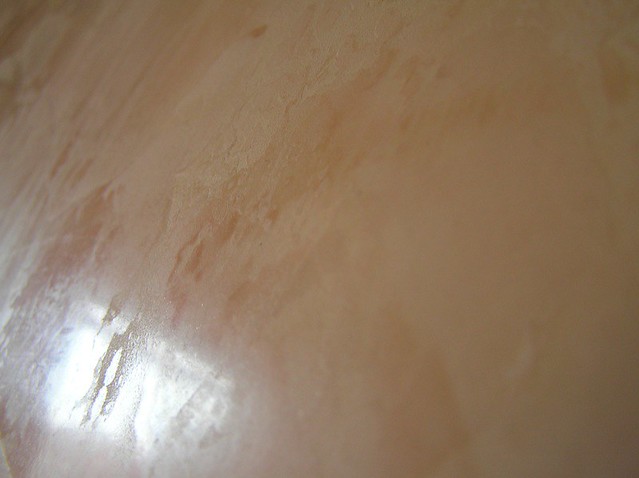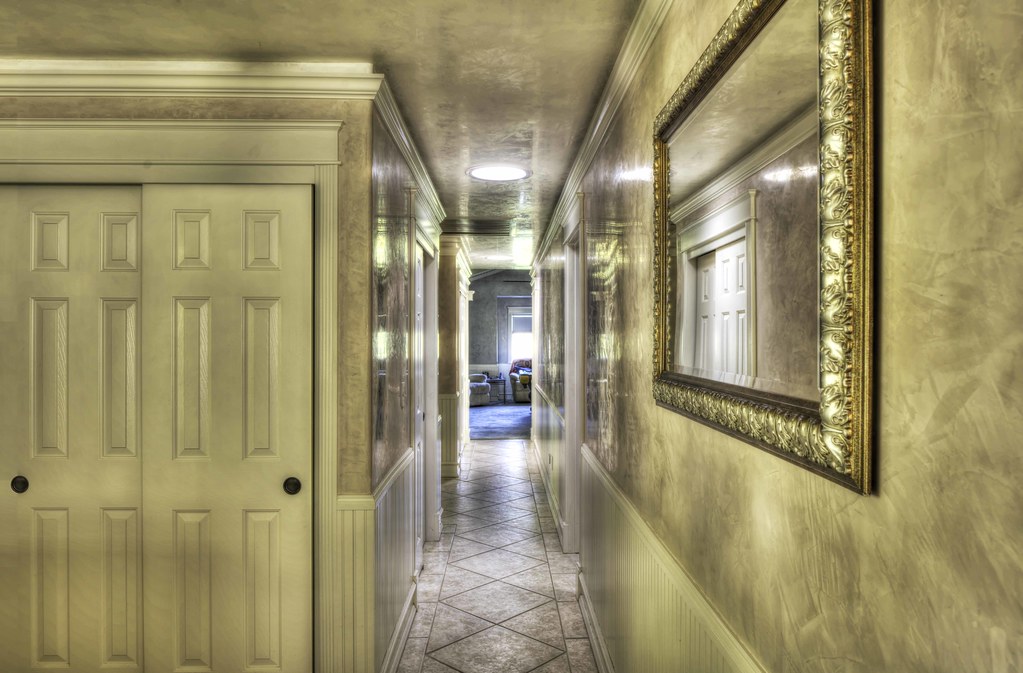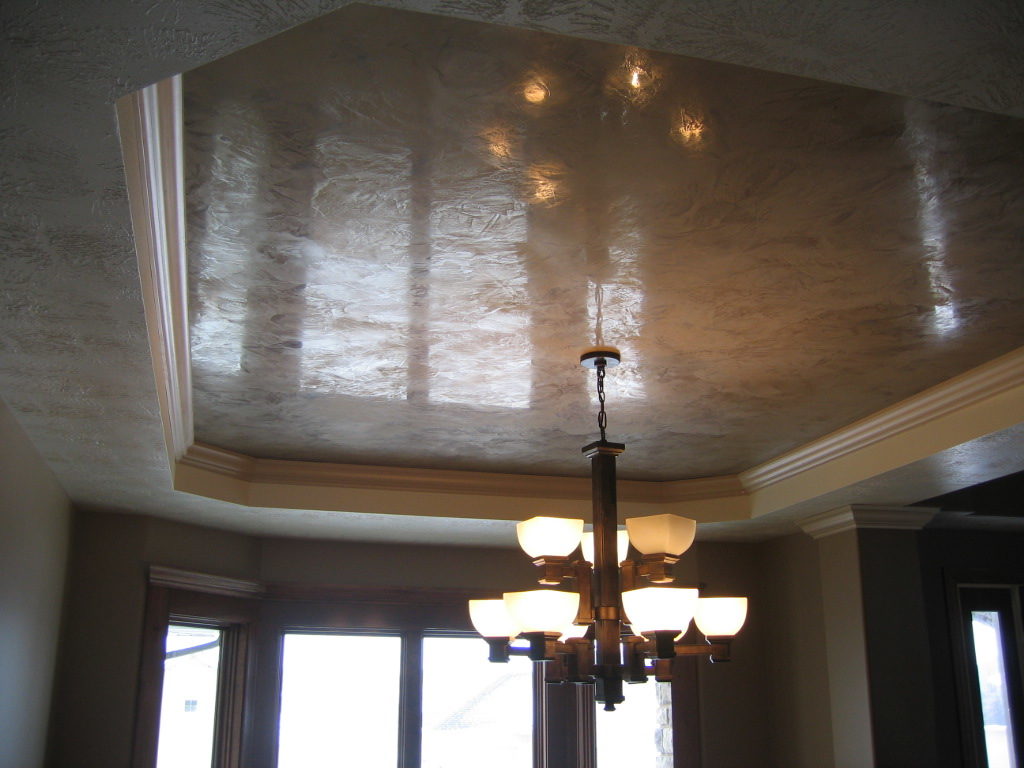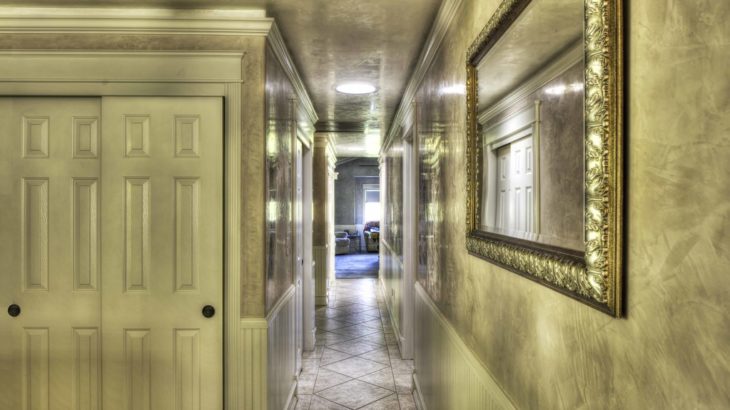
Venetian plasters have existed since the middle ages and have been used to create stunning finishes. Designed to be plastered in very thin coats, their thickness varies between 0.5 and 1mm, depending on the desired effect. They are now known under many different names, such as ‘polished plasters’ or ‘marble plasters.’ They get these names from the finishes that they give: smooth, shiny, marbled, textured and stone-like.
Venetian plasters are generally made from matured lime putty, fine marble dust, natural waxes and oils. Delivering distinctive and exceptional finishes requires Venetian plaster application that blends traditional artisan craftsmanship with contemporary style. Those finishes can range from simple, natural to polished elegance, and can bring timeless appeal to any location, whether residential or commercial.
How Does Venetian Plaster Look and Feel Like?

Venetian Plasters applied in thin translucent layers creates an iridescent finish. This finish is earthy, soft and gives the appearance of depth and movement. The interplay of natural light and lime plaster appears as if there’s a warm light emanating from within the plaster. It gives off the impression of lightness, which pairs well with both minimalist and old world, traditional aesthetic.
Not only does it warm up pared-down spaces and bring focus to the essential, but it is also smooth and cool to the touch and looks good both in various settings.
What Are the Types of Finishes Available for Venetian Plaster?
- Polished Stucco
This plaster of stucco is usually made of slaked lime and marble dust. It is usually applied in 3-4 coats before being layered with a specialty wax polish. Polished Stucco is known for its timeless beauty and the luxurious finish it offers. The glass-like lustre it offers can bring unrivalled depth and richness of colour to any room.
- Marmorino
Marmorino plaster can come in three categories: Fine, Naturale and Carrara. Marmorino Fine is similar to Polished Stucco, except easier to finish. It produces a natural mineral look with a glossy finish which is smooth to touch.
Marmorino Naturale, on the other hand, is an elegant and refined finish that reproduces the typical effect of natural marble. It fits well in the classic and contemporary environment.
Marmorino Carrara plaster is completely smooth and has a depth of colour that is reminiscent of traditional and historical Veneziano plaster.
- Tonachino
Tonachino is made of slaked lime, river sands and polymer admixtures that make for easy application, great adhesion and exceptional durability for both interiors and exteriors. The ingredients used in the blend also have good filling power and are highly water-repellent, making the product naturally resistant to moulds and bacteria.
This Italian plaster offers a world of possibilities in terms of style and is mostly known for its warm, matt finish that has a sand finish appearance and a velvet-like feel to the touch.
- Concrete stucco
Concrete Stucco has the natural look of polished concrete. You can use this to create a contemporary urbane style in your commercial space.

Pros of Using Venetian Plaster
- New products used to make this type of plaster are low-maintenance and very durable. Venetian Plaster is almost as flexible as paint in terms of application and maintenance.
- Scuffs or blemishes can be repaired in patches and blended with the rest of the wall. Even most minor scuffs can be removed easily with a damp cloth and mild detergent.
- Venetian Plaster does a great job at hiding bumps and inconsistencies in drywall.
- Venetian plaster looks like marble with the added advantage of being much less expensive.
- It doesn’t emit toxic fumes and is breathable, mould-resistant and mildew-resistant.
Cons of Using Venetian Plaster
- Even if it cheaper than marble, venetian plaster is much more costly than paint.
- If the plaster has aggregates, it will be bit higher-maintenance and will require re-plastering the entire wall to hide a scuff or blemish.
Applying Venetian Plaster
Step 1: Prime the surface and wait for it to dry, which would usually take 3-4 hours.
Step 2: Apply a base coat with a stainless-steel laying trowel and leave it to dry for half an hour.
Step 3: Trowel flat so the texture you wanted shows through the subsequent coats of Venetian plaster. Wait another 3-4 hours for it to dry and harden.
Step 4: Using a stainless-steel trowel or spatula, apply the first coat of Venetian plaster. Work on a small area at a time and ensure the coat is not too thick.
Step 5: Apply the second and third coat. Wait for 1- 2 hours between each coat.
Step 6: Flatten the surface and wait for it to dry. Then start polishing the plaster with the edge of the trowel or spatula.
Step 7: Wait one or two days after step 6 and soap and wax the surface.
A Supplier We Would Recommend?
Crown Solid Plaster has to be one of our favorite suppliers. Not only are they a highly innovative company with a knowledgeable staff to walk you through choosing the right type of plaster, but they also have an array of services including mouldings, render repairs, foam installation, colour matching service, Hebel and foam cladding.




















Nice article. Like to read it good explanation on Venetian Plaster.
It’s great that you mentioned that Venetian plaster is mildew-resistant and doesn’t emit toxic fumes. My brother wants to finish his basement soon and he is trying to find a safe material that he can use to cover up the drywall that he is using to create some rooms. It seems like it would be a good idea for him to use Venetian plaster on the drywall since he is planning on making one of the new rooms a bedroom for one of his kids.
Do you have a spam problem on this blog; I also am a blogger, and I was wanting to know your situation; many of us have created some nice procedures and we are looking to exchange strategies with other folks, be sure to shoot me an email if interested.
“My brother recommended I might like this website.
He was totally right. This post truly made my day.”
I have learn several good stuff here. Definitely value bookmarking for revisiting. I wonder how much effort you put to make the sort of magnificent informative site.
I am truly grateful to the holder of this web site who has shared
this great paragraph at at this place.
Its such as you read my thoughts! You seem to know so much about this, such as you wrote the guide in it or something.
Thanks for also talking about the amount of coats that I could have when it comes to venetian plastering. I’d like to look into that because I want to focus on reinforcing my home. I think that getting its walls improved will be necessary for that.